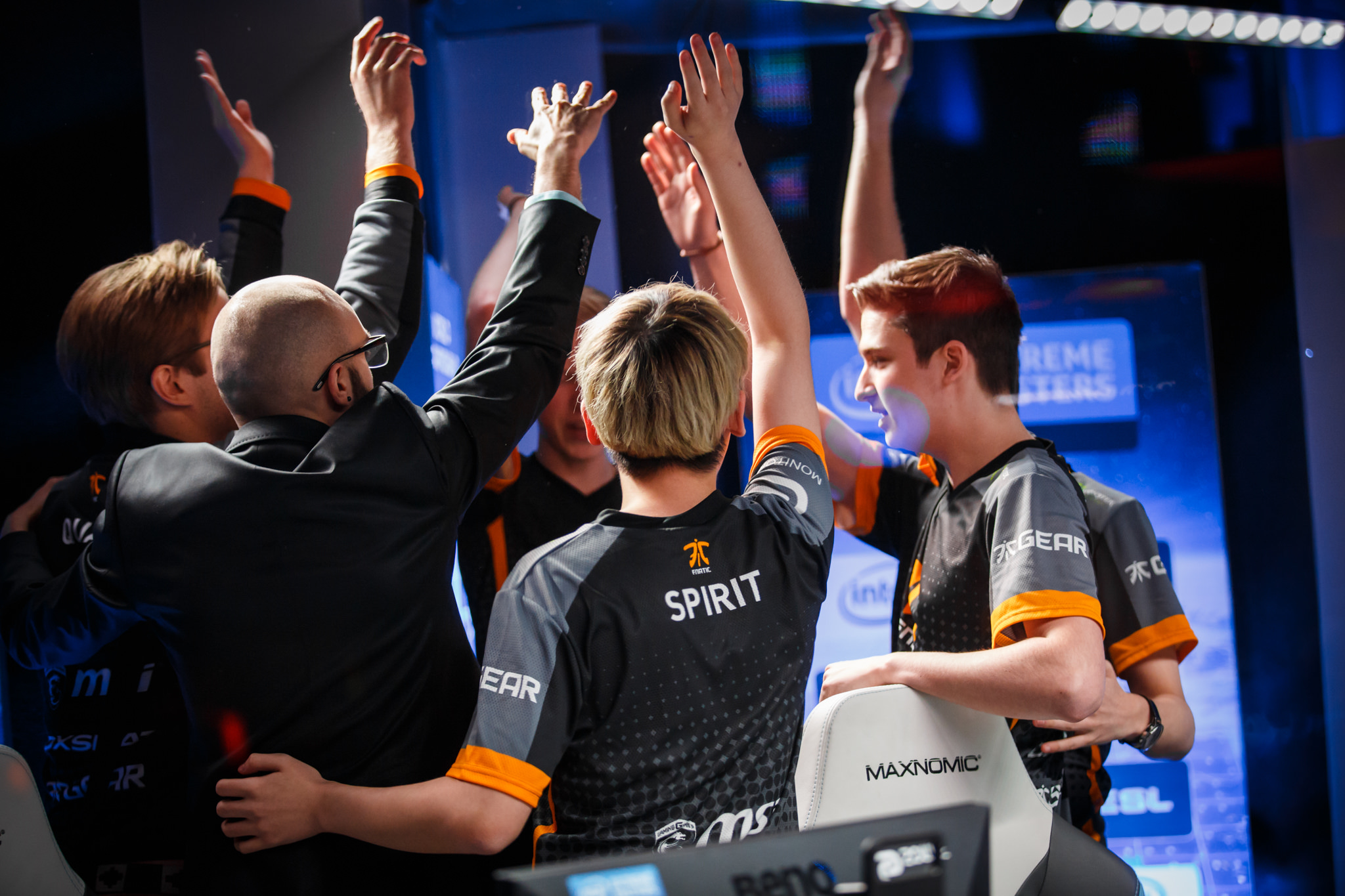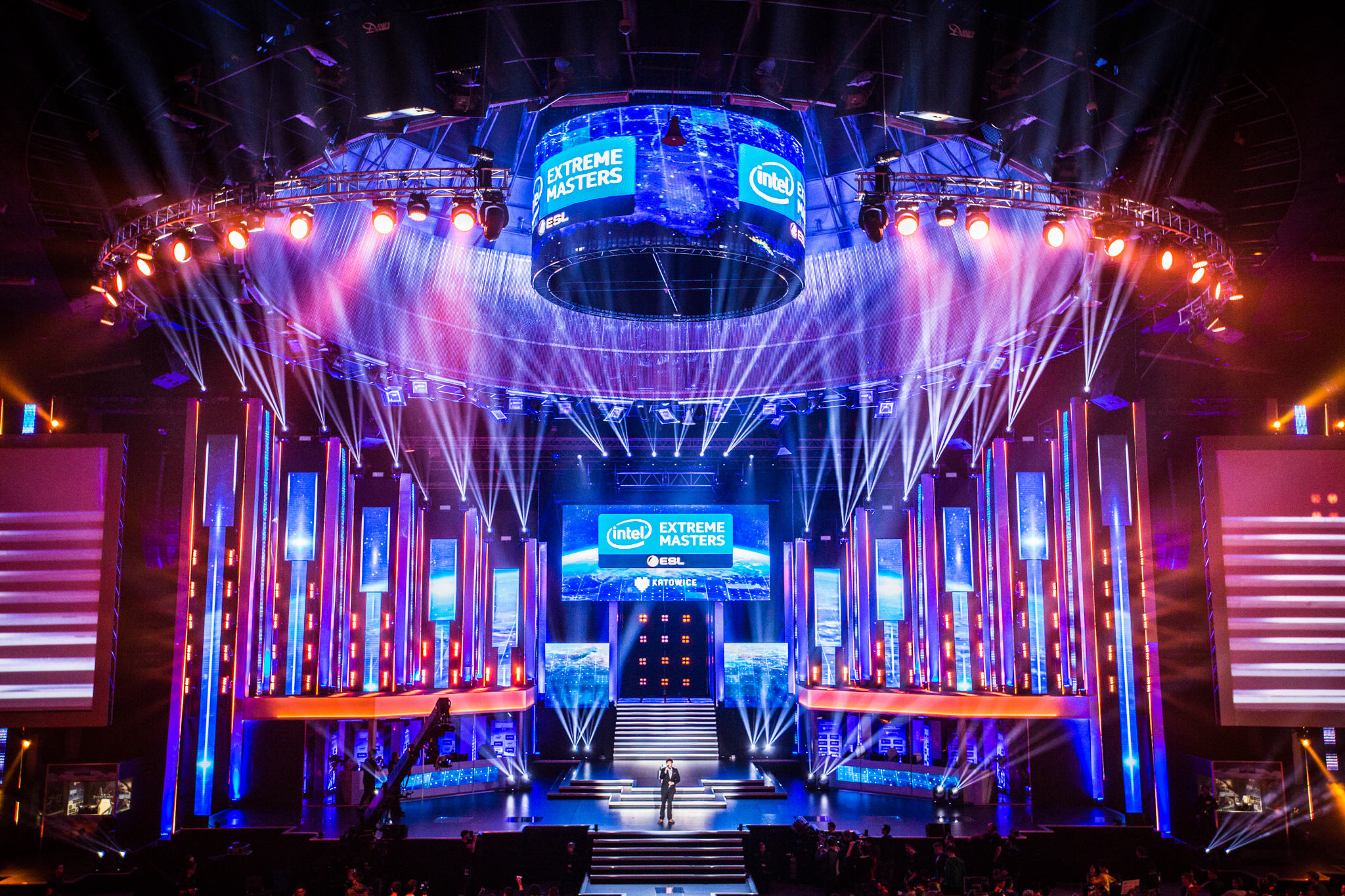IEM Katowice and the fall of Chinese LoL

IEM Katowice's League of Legends program went roughly as expected. There were two notable surprises: Fnatic did much better than their EU LCS form would have suggested, while Counter Logic Gaming's individual weaknesses were exposed in turn. But it settled out as everybody predicted: SKT T1 had another perfect run through another international tournament—the second time that they've managed to do so despite struggling to stay playoffs-viable back home in South Korea. North America, of course, was the whipping post for the international assembly.
But the interesting thing is that they weren't alone. Arguably, they weren't even the worst. As much of a joke as North American teams are in an international context, at least they're willing to laugh along to some extent—in China's case, everybody's awkwardly trying not to stare.
Since late 2012 China has been considered the second-strongest region in the world of competitive League of Legends. The winners of IPL 5, the gung-ho hyper-aggressive "freight train" that gave even SKT T1 K in 2013 a bump, so on and so forth: they've earned the respect of the world through the virtue of being the most entertaining region to watch. Though the Koreans' immaculate strategic perfection would have them take home the trophy time and again, everybody nonetheless appreciated the gusto and fearlessness that Chinese teams would bring to the table.
Since last Worlds, however, all that has seemingly deflated. And it isn't just in League of Legends. Whether at Dota 2's Shanghai Major or halfway across the continent at IEM Katowice, China's esports programs have reached an unexpectedly ubiquitous nadir. What the heck happened to an entire continent of players?
Losing the arms race
The most obvious issue with Chinese esports is that they're woefully out of date. Excuses have been cobbled together to try and explain it—Tencent was notorious for pushing live patches late, occasionally making it so that Chinese teams have to fight in metagames they haven't practiced on a professional level. However, scrutiny quickly dispels the myth: at least with Katowice, they've had at least as much time as the Korean teams. In fact, eastern practices are largely homogenized: the top Chinese, Korean and Taiwanese teams have publicly acknowledged each other as scrim partners, and it is common practice for players to log on the Korean solo queue ladder as a way to sharpen their skills.
Besides, even China knows that their strategic deficit isn't based on the latest patch, but stemming back all the way to late last year—and possibly earlier.
As translated by Goldper10 author Hodeken, LMS caster Clement Chu was able to interview Edward Gaming coach Ji "Aaron" Xing after Worlds 2015. And Aaron's summation of the state of the Chinese game still stands:
The biggest gaming news, reviews and hardware deals
Keep up to date with the most important stories and the best deals, as picked by the PC Gamer team.
"...this kind of play style has actually been pretty commonplace in Europe before. Perhaps it's because Western teams thought that they could not get an advantage in a direct matchup with the Asian teams so they put a lot more effort in planning and strategy. Especially their wave management and timing of when to push down turrets, which explains why they prioritize champions with good wave-clear and the teleporter mid lane."
That exact pattern of behavior expressed itself half a year later at Katowice: CLG's beautifully coherent macro play, centered around tandem plays with Darshan's splitpushes, was exposed under international pressure as a means of alleviating attention from mid laner Huhi and AD carry Stixxay. Against a team of similarly developed macro strategies, those weaknesses proved fatal thanks to the extended mid-game respawn timers this year. But even while losing, they were at least able to catch people off-guard, even pushing deep into SKT T1's side of the map.
And what about teams that haven't developed anti-splitpush strategies at all? Then the inverse was true. No matter how well Royal Never Give Up played in skirmishes, they ultimately had to ironically give up when even their best fights netted them zero turrets and lost buffs. Same with QG Reapers, who were blown out of the water by a resurgent and increasingly confident Fnatic—QG had absolutely no idea how or when to play around Rekkles's Jhin, losing fights before they even knew they started as soon as Jhin's ultimate was off cooldown.
China came in expecting a knife fight. What they got, instead, was a Cold War of manipulations and maneuverings.

Weapons development
You would think that if Edward Gaming's coach could accurately identify China's weak points, then the entire region must surely be busy solving it. And it's an assumption further fueled by the eyewateringly large amounts of money that China has flung at top South Korean talent for two years running. Yet that raises only more questions.
The Korean coaches hired to help develop LPL teams used to play on LCK teams that did just fine with their macro play. If nothing else, it's inconceivable for them to have effected zero change within the teams they now guide, given the stark differences in Korean and Chinese play styles—yet where is it actually expressed?
Of the Chinese teams at Katowice, both have Korean coaching staff. Of the two, only QG have really developed a map play strategy for regular LPL use—one that actually stands in interesting contrast to the Western style by deliberately losing a side tower early so that AD carry Peco can then freeze the minion waves and spend the rest of the game farming passively.
It was also a style abandoned entirely at Poland, as Peco was swapped out for Uzi instead—and Uzi is the last player to send 20 minutes passively last-hitting. Royal fared better in Group A, stomping through both Origen and Ever—expected wins, given both teams were struggling for relevance back home. But against Fnatic, who had polished up surprisingly nicely by the playoff brackets, they were quickly outmaneuvered. Jungler Mlxg, top laner Looper, support player Mata: these are all extremely well-respected names, and the tournament clearly demonstrated their individual skills. But individual mechanics amount for little when your entire team's positioning had been carefully predicted and manipulated into Rekkles's gunsights.
For Chinese League of Legends to reclaim even a shadow of their former respect, two things should be considered. One, pay whatever amount of money it takes to drag Aaron out of temporary retirement, as he seems even now to be the only coach with the insight to recognize the weaknesses in the Chinese style of play—and, crucially, was the man to defang Faker's LeBlanc last year. Two: to stop hiring foreign players and staff entirely.
The problem with strategies like CLG's splitpush is that it requires a level of communicative fluency that might simply be impossible for Chinese teams as they are. Not necessarily between the players, mind you—in-game, shotcalling and timers are usually reduced to short-syllable names, timestamps and pings. Generally, when you're busy with skirmishes, the shotcaller isn't making a long-winded spiel about how they should approach the next fight.
Outside of the game, though, when the coach and players are discussing strategy, mutual fluency is a much bigger deal. The ability to explain the hows and whys they should approach a game in a certain way, and especially how to time itemization with map movements, is already difficult enough when you share the same language (so difficult that Origen still hasn't settled on a coach). Having a live-in interpreter can only help up to the point where jargon and game slang start to muddy the waters. Heck, TheScore's Kelsey Moser has had trouble finding anybody that can translate "split push" into Chinese in the first place—and it's a good question whether it's simply because the interpreter didn't know the words for it, or if there is actually a linguistic void for the concept among Chinese esports.
That's slightly unfair in the sense that Snake clearly knows what it is and practices it regularly. But Snake isn't QG Reapers, and isn't Royal Never Give Up. There needs to be more than one Chinese team diligently practicing complex strategies against each other—losing and winning in turn, testing and refining their approaches with every iterative game. And they need to be good enough that it's clear to the rest of the scene that the effort isn't wasteful.
If they can't figure that out by the summer split, then forget about October. Might as well give their Worlds seeds to Taiwan instead, just a hundred miles off the coast, and save on the heartbreak.

PC Gamer Pro is dedicated to esports and competitive gaming. Check back every day for exciting, fun and informative articles about League of Legends, Dota 2, Hearthstone, CS:GO and more. GL HF!

